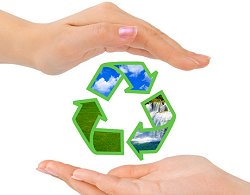Bricks have a lifespan of more than 200 years. You can reclaim or recycle bricks and blocks which have previously been used in the construction of buildings, walls, paving and infrastructure, such as bridges and sewers. These include:
- clay bricks
- concrete precast
- aerated blocks
- stone blocks
You can also buy them from other businesses which sell reclaimed bricks.
The most common sources of brick and block waste include items that are damaged during unloading, storage and cutting, and excess due to over ordering.
Recycling options
You can reclaim undamaged bricks and blocks and use them in new building projects or sell them to other businesses which deal in reclaimed bricks.
You can recycle damaged bricks and blocks and use them:
- to make aggregate for use as general fill or highway sub-base
- in landscaping
- to produce new bricks and blocks
- to make sports surfaces such as tennis courts and athletics tracks
- as plant substrate
Limitations of recycling bricks and blocks
However, there are some limitations on using recycled bricks and blocks, including:
- bricks can be contaminated by other construction waste, such as plasterboard
- new aircrete blocks are cheap to buy
- cleaning bricks is time consuming and not always possible
- it is hard to assess the load-bearing capacity of recycled bricks
Reclaimed bricks are worth more than bricks which are recycled as aggregate. It is easier to source reclaimed bricks left over from new build projects, but more difficult with demolition projects.
Making changes to your site operations
You can make simple yet effective changes to your site’s operations to reduce wastage and allow more waste to be recycled by:
- providing dedicated storage areas to reduce damage during storage
- training staff in the handling of materials
- planning during the design stage to minimise the need for cutting bricks and blocks
- separating brick and block waste to avoid damage and contamination
- using a lime-based mortar rather than a cement-based mortar – this allows the bricks to be recovered and reused at building deconstruction




